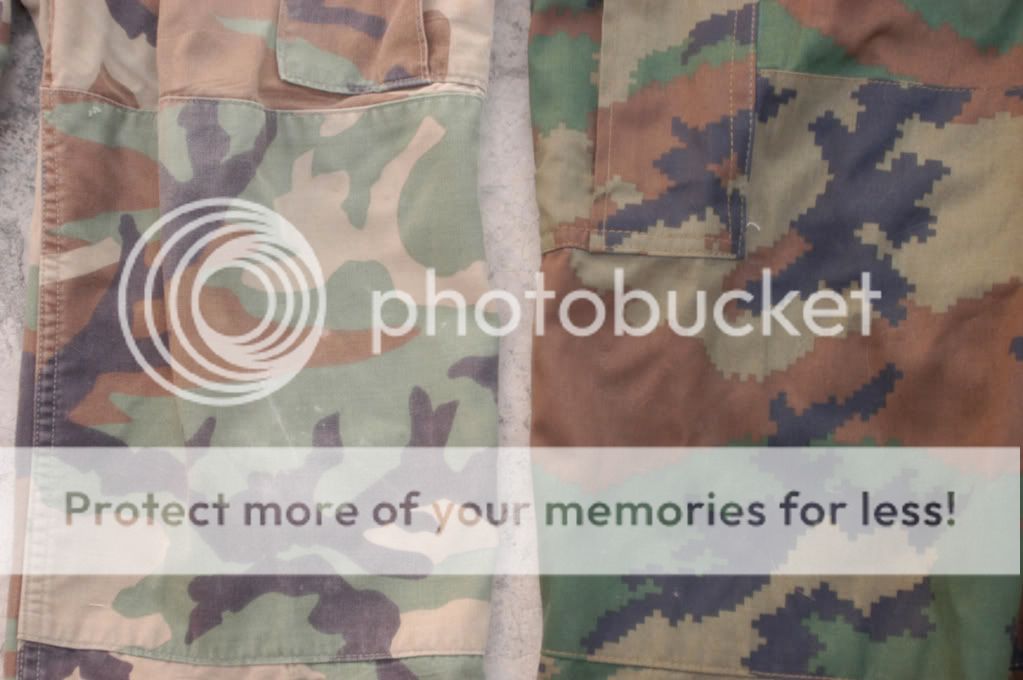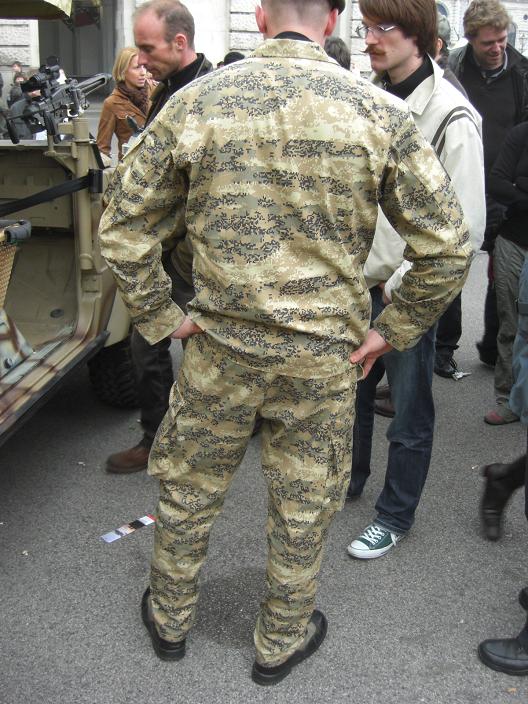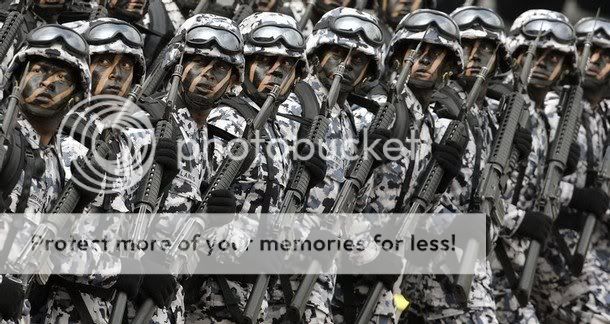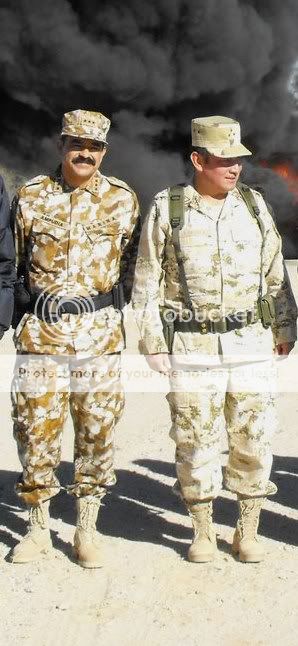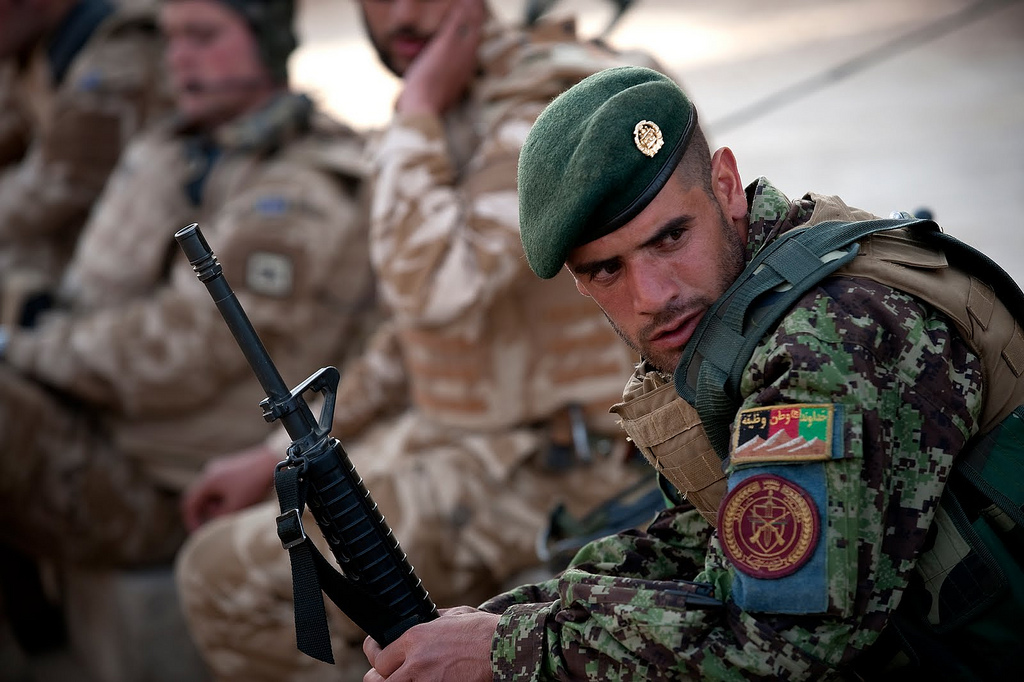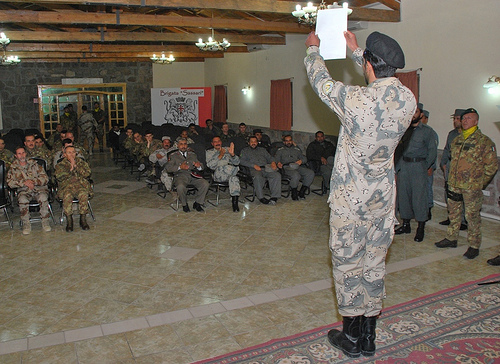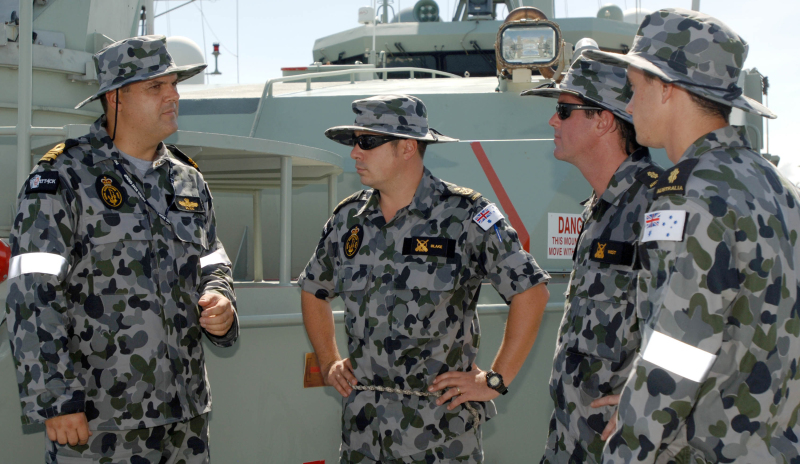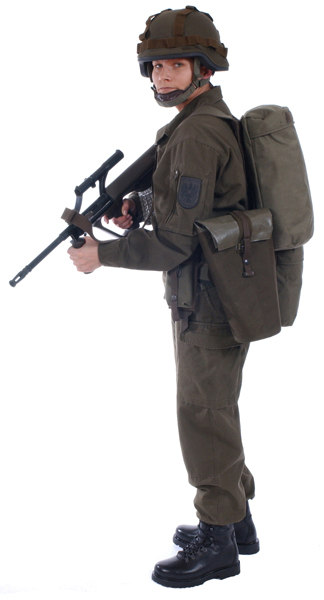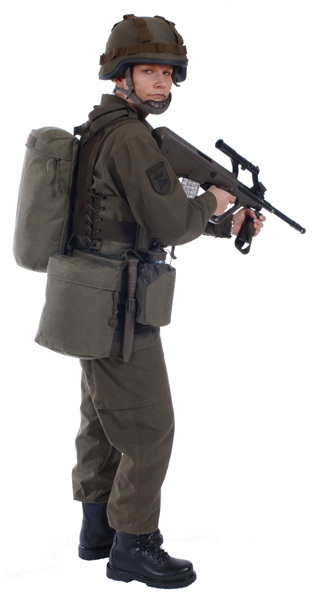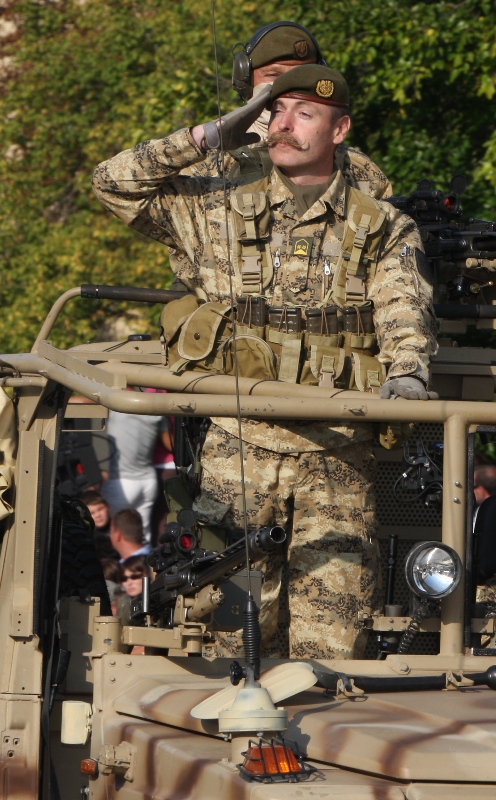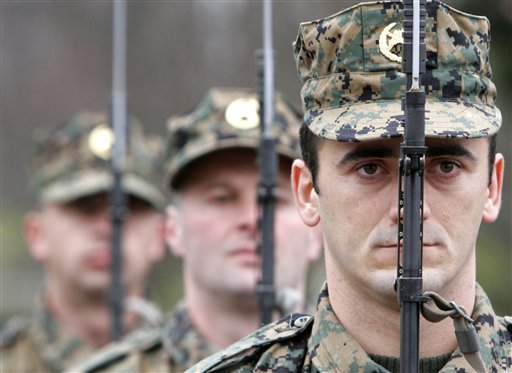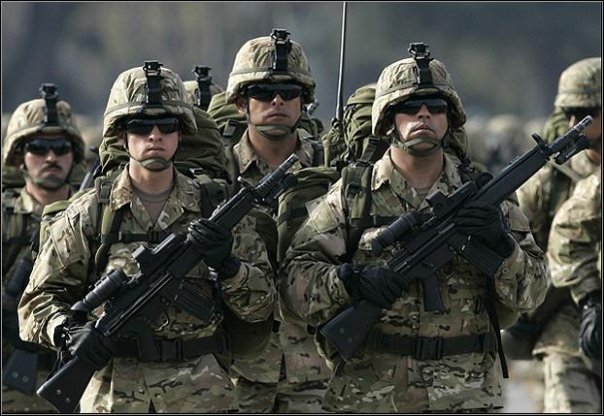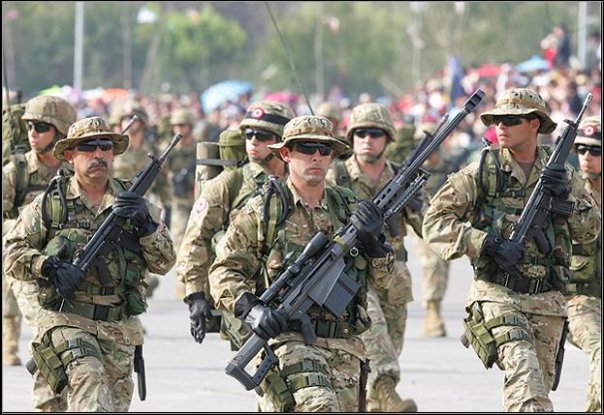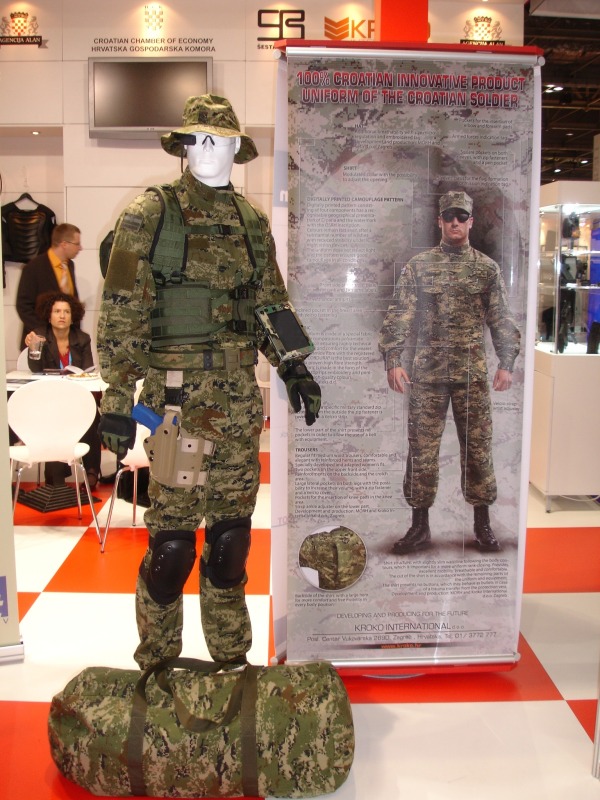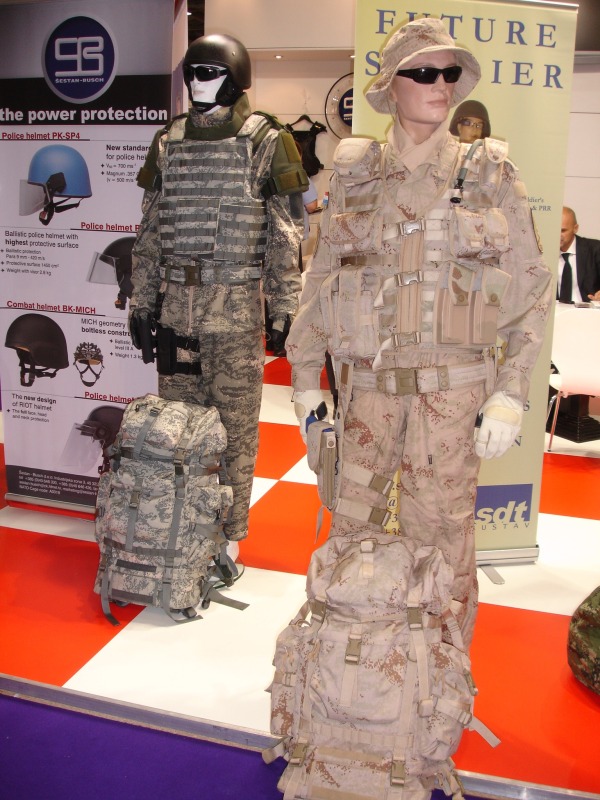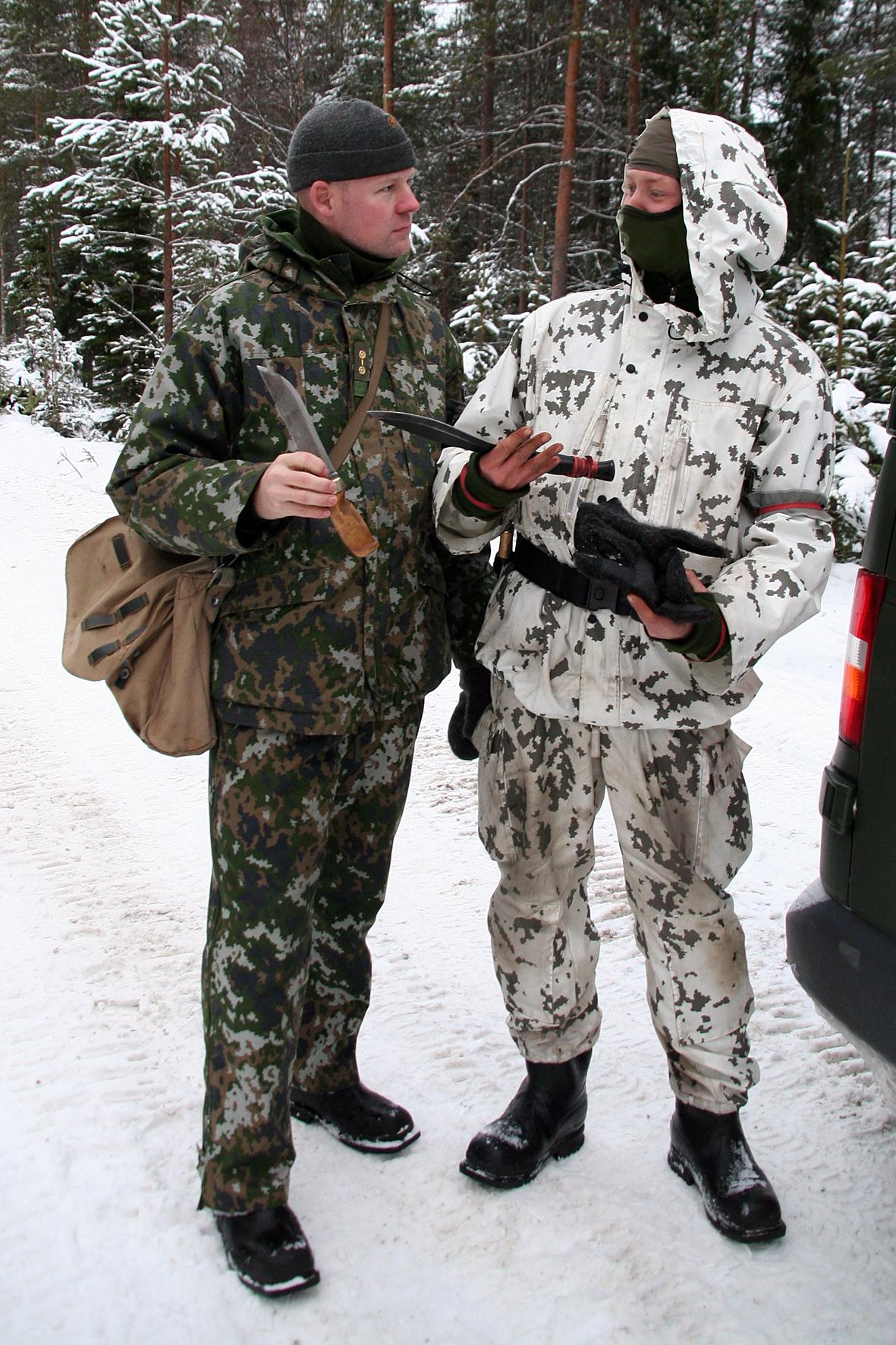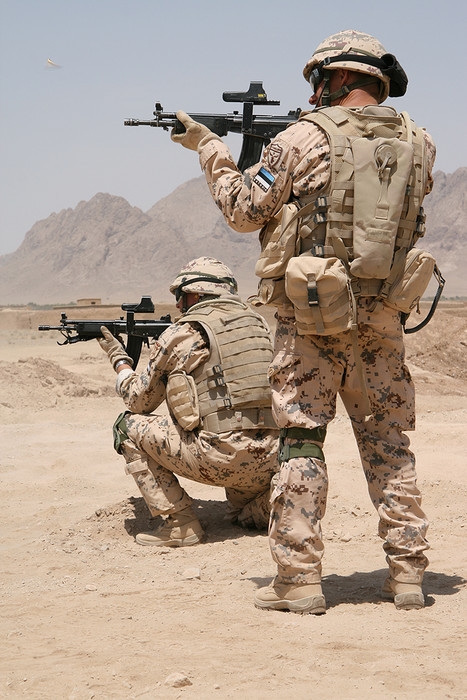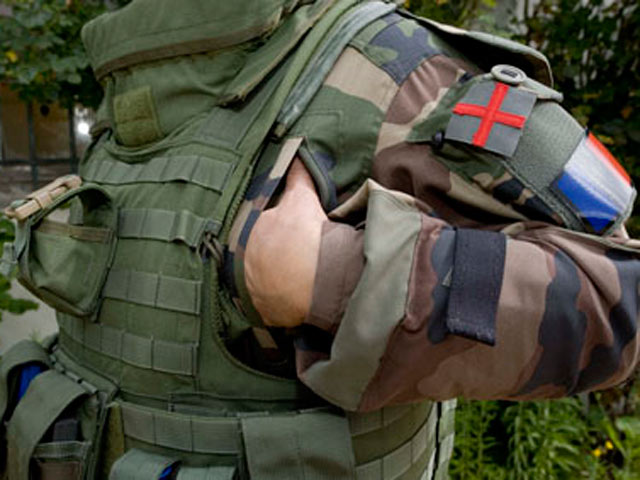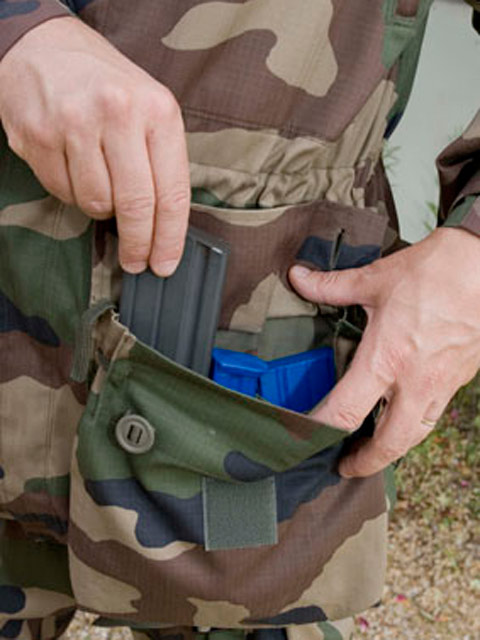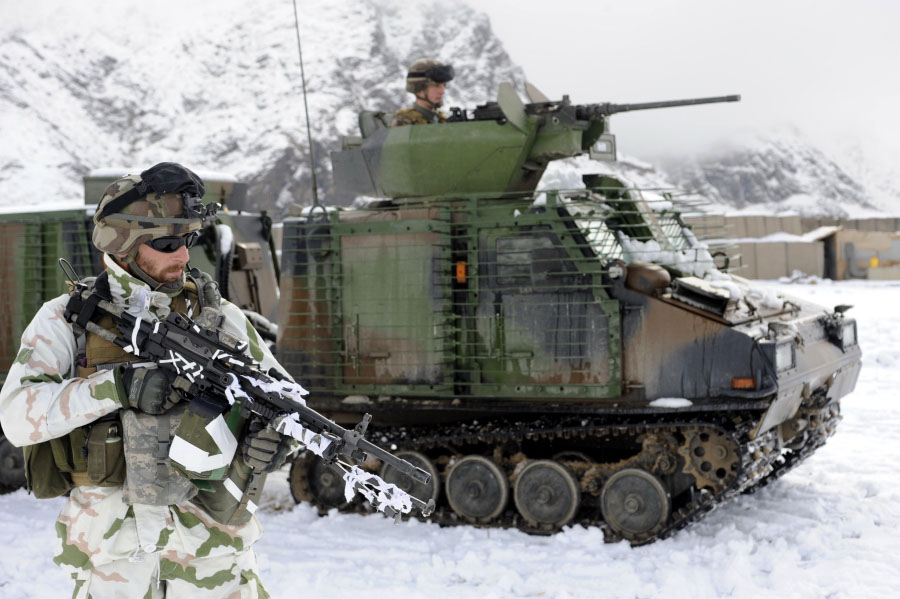Manticore
RETIRED MOD

- Joined
- Jan 18, 2009
- Messages
- 10,115
- Reaction score
- 114
- Country
- Location
Principles
Military camouflage is part of the art of military deception. The main objective of military camouflage is to deceive the enemy as to the presence, position and intentions of military formations. Camouflage techniques include concealment, disguise, and dummies, applied to troops, vehicles, and positions. According to Winston Churchill (First Lord of the Admiralty in WWI and Prime Minister in WWII) deception in war is an indispensable "element of léger de main, an original and sinister touch, which leaves the enemy puzzled as well as beaten."[1]
Vision is the main sense of orientation in humans, and the primary function of camouflage is to deceive the human eye. Camouflage works through concealment (whether by countershading or disruption of outlines), mimicry, or possibly by dazzle.[2][3] In modern warfare some forms of camouflage also offer concealment from radar, infrared, and night vision devices.
While camouflage tricks are in principle limitless, both cost and practical considerations limit the choice of methods and the time and effort devoted to camouflage. Paint and uniforms must also protect vehicles and soldiers from the elements. Units need to move, fire their weapons and perform other tasks to keep functional, some of which run counter to camouflage.[2] Camouflage may be dropped altogether, as in the latter part of the Second World War when the US Air Force abandoned camouflage paint for combat aircraft to reduce drag and weight.
Unlike an animal or a civilian hunter, military units rarely have the option to stick to a single environment. Civilian hunting clothing may have almost photo-realistic depictions of tree bark or leaves, indeed some such patterns are based on photographs.[4] A military unit, on the other hand, may cross several terrain types in a single day.[2] Patterns are therefore generalized to work in several environments, aiming for a general colour match or to disrupt outlines, rather than to mimic a specific terrain directly.
Compromises
Finnish artillery during the Winter War, showing improvised snow camouflage made from bedsheets and whitewash
No single camouflage pattern is effective in all terrains.[5] The effectiveness of a pattern depends not only on colour tones, patterns will play a role too: Strong contrasts are better suited for jungles and forests where the play of light and shade is prominent, while low contrasts are better suited to open terrain with little shading structure.[6] Patterns made to match the local terrain may be more effective in that terrain than more general patterns. An American attempt at a global camouflage pattern (the 2004 UCP) was withdrawn after a few years of service.[7] On the other end of the scale are terrain specific patterns like the "Berlin camo", applied to British vehicles operating in Berlin during the Cold War.[8]
Seasons may play a role in some regions. A dramatic change in colour and texture is created by seasonal snowy conditions in northern latitudes, necessitating repainting of vehicles and separate winter uniforms or oversuits. The Waffen-SS went a step further, developing reversible uniforms with separate schemes for summer and autumn, as well as winter oversuits
Movement
While patterns can provide more effective crypsis than solid colour when the camouflaged object is stationary, any pattern, particularly one with high contrast, stands out when the object is moving.[10][11] Jungle camouflage uniforms were issued during the Second World War, but both the British and American forces found that a simple green uniform provided better camouflage when soldiers were moving. After the war, most nations returned to a unicoloured uniform for their troops.[2] Some nations, notably Austria and Israel continue to use solid colour combat uniforms today.[12][13] Similarly, while larger military aircraft traditionally had a disruptive pattern with a darker top over a lighter lower surface (a form of countershading), modern fast fighter aircraft often wear gray overall
Pattern scale and digitization
The scale of camouflage patterns has an obvious effect on their use. Large structures need larger patterns than smaller vehicles and single soldiers to break up their shape. At the same time, large patterns are more effective from afar, while small scale patterns work better up close.[15]
During the Second World War, Johann Georg Otto Schick[a] designed a number of patterns for the Waffen-SS, combining micro- and macro-patterns in one scheme.[9] The German Army developed the idea further in the 1970s into Flecktarn, which combines smaller shapes with dithering.[16] The dithering softens the edges of the large scale pattern, making the underlying objects harder to discern.
In the 1970s, US army officer Timothy R. O'Neill suggested that patterns consisting of square blocks of colour would provide effective camouflage.[17] This aroused little interest at the time, but by 2000, O'Neill's idea was combined with patterns like the German Flecktarn to create pixelated patterns like CADPAT or MARPAT. Battledress in digital camouflage patterns was first designed by the Canadian Forces. The "digital" refers to the coordinates of the pattern, which are digitally defined.[18] The term does not apply only to pixelated patterns but to all computer generated patterns like the non-pixelated Multicam and the Italian fractal Vegetato pattern.[19]
According to the patent for MARPAT, pixelation does not in itself contribute to the camouflaging effect. The pixelated style however simplifes design and eases printing on fabric, compared to more traditional "splotchy" patterns. While pixelated patterns are becoming widespread, critics maintain that the pixelated look is a question of fashion rather than function
Non-visual
With the birth of radar and sonar and other means of detecting military hardware not depending on the human eye, came means of camouflaging against them. Collectively these are known as stealth technology.[21] Aircraft and ships can be shaped to reflect radar impulses away from the sender, and covered with radar-absorbing materials, to reduce their radar signature.[21][22] The use of heat-seeking missiles has also lead to ways of hiding the heat signature from vehicles, particularly jet fighters. Methods include exhaust ports shaped to facilitate mixing of hot gases with cold surrounding air before it leaves the exhaust ports.[23]
Unlike in animal camouflage, auditory and olfactory camouflage is rare.[24] The rubberized hull of military submarines dampens their sonar profile and can be seen as a form of auditory camouflage.[25] Some modern helicopters are built to be quiet.[26] Combat uniforms are usually equipped with traditional buttons rather than snaps fasteners or velcro to reduce noise.[2] Ghillie suits, special garments for military snipers made from stripes of hessian cloth, are sometimes treated with mud and even manure to give it an "earthy" smell, hiding even the smell of the snipe
http://en.wikipedia.org/wiki/Military_camouflage
Examples
turkey



Slovakia


Croacia


u.s

21st Century Camo Uniforms – the rest of the world
21st Century Camo Uniforms – the rest of the world | Strike – Hold!
Armed forces spend billions on camouflage uniforms
http://www.heraldnet.com/article/20121005/NEWS02/710059916
Why camouflage uniforms aren’t uniform
http://www.washingtonpost.com/world...4d6c-0ccc-11e2-a310-2363842b7057_story_1.html
Military camouflage is part of the art of military deception. The main objective of military camouflage is to deceive the enemy as to the presence, position and intentions of military formations. Camouflage techniques include concealment, disguise, and dummies, applied to troops, vehicles, and positions. According to Winston Churchill (First Lord of the Admiralty in WWI and Prime Minister in WWII) deception in war is an indispensable "element of léger de main, an original and sinister touch, which leaves the enemy puzzled as well as beaten."[1]
Vision is the main sense of orientation in humans, and the primary function of camouflage is to deceive the human eye. Camouflage works through concealment (whether by countershading or disruption of outlines), mimicry, or possibly by dazzle.[2][3] In modern warfare some forms of camouflage also offer concealment from radar, infrared, and night vision devices.
While camouflage tricks are in principle limitless, both cost and practical considerations limit the choice of methods and the time and effort devoted to camouflage. Paint and uniforms must also protect vehicles and soldiers from the elements. Units need to move, fire their weapons and perform other tasks to keep functional, some of which run counter to camouflage.[2] Camouflage may be dropped altogether, as in the latter part of the Second World War when the US Air Force abandoned camouflage paint for combat aircraft to reduce drag and weight.
Unlike an animal or a civilian hunter, military units rarely have the option to stick to a single environment. Civilian hunting clothing may have almost photo-realistic depictions of tree bark or leaves, indeed some such patterns are based on photographs.[4] A military unit, on the other hand, may cross several terrain types in a single day.[2] Patterns are therefore generalized to work in several environments, aiming for a general colour match or to disrupt outlines, rather than to mimic a specific terrain directly.
Compromises
Finnish artillery during the Winter War, showing improvised snow camouflage made from bedsheets and whitewash
No single camouflage pattern is effective in all terrains.[5] The effectiveness of a pattern depends not only on colour tones, patterns will play a role too: Strong contrasts are better suited for jungles and forests where the play of light and shade is prominent, while low contrasts are better suited to open terrain with little shading structure.[6] Patterns made to match the local terrain may be more effective in that terrain than more general patterns. An American attempt at a global camouflage pattern (the 2004 UCP) was withdrawn after a few years of service.[7] On the other end of the scale are terrain specific patterns like the "Berlin camo", applied to British vehicles operating in Berlin during the Cold War.[8]
Seasons may play a role in some regions. A dramatic change in colour and texture is created by seasonal snowy conditions in northern latitudes, necessitating repainting of vehicles and separate winter uniforms or oversuits. The Waffen-SS went a step further, developing reversible uniforms with separate schemes for summer and autumn, as well as winter oversuits
Movement
While patterns can provide more effective crypsis than solid colour when the camouflaged object is stationary, any pattern, particularly one with high contrast, stands out when the object is moving.[10][11] Jungle camouflage uniforms were issued during the Second World War, but both the British and American forces found that a simple green uniform provided better camouflage when soldiers were moving. After the war, most nations returned to a unicoloured uniform for their troops.[2] Some nations, notably Austria and Israel continue to use solid colour combat uniforms today.[12][13] Similarly, while larger military aircraft traditionally had a disruptive pattern with a darker top over a lighter lower surface (a form of countershading), modern fast fighter aircraft often wear gray overall
Pattern scale and digitization
The scale of camouflage patterns has an obvious effect on their use. Large structures need larger patterns than smaller vehicles and single soldiers to break up their shape. At the same time, large patterns are more effective from afar, while small scale patterns work better up close.[15]
During the Second World War, Johann Georg Otto Schick[a] designed a number of patterns for the Waffen-SS, combining micro- and macro-patterns in one scheme.[9] The German Army developed the idea further in the 1970s into Flecktarn, which combines smaller shapes with dithering.[16] The dithering softens the edges of the large scale pattern, making the underlying objects harder to discern.
In the 1970s, US army officer Timothy R. O'Neill suggested that patterns consisting of square blocks of colour would provide effective camouflage.[17] This aroused little interest at the time, but by 2000, O'Neill's idea was combined with patterns like the German Flecktarn to create pixelated patterns like CADPAT or MARPAT. Battledress in digital camouflage patterns was first designed by the Canadian Forces. The "digital" refers to the coordinates of the pattern, which are digitally defined.[18] The term does not apply only to pixelated patterns but to all computer generated patterns like the non-pixelated Multicam and the Italian fractal Vegetato pattern.[19]
According to the patent for MARPAT, pixelation does not in itself contribute to the camouflaging effect. The pixelated style however simplifes design and eases printing on fabric, compared to more traditional "splotchy" patterns. While pixelated patterns are becoming widespread, critics maintain that the pixelated look is a question of fashion rather than function
Non-visual
With the birth of radar and sonar and other means of detecting military hardware not depending on the human eye, came means of camouflaging against them. Collectively these are known as stealth technology.[21] Aircraft and ships can be shaped to reflect radar impulses away from the sender, and covered with radar-absorbing materials, to reduce their radar signature.[21][22] The use of heat-seeking missiles has also lead to ways of hiding the heat signature from vehicles, particularly jet fighters. Methods include exhaust ports shaped to facilitate mixing of hot gases with cold surrounding air before it leaves the exhaust ports.[23]
Unlike in animal camouflage, auditory and olfactory camouflage is rare.[24] The rubberized hull of military submarines dampens their sonar profile and can be seen as a form of auditory camouflage.[25] Some modern helicopters are built to be quiet.[26] Combat uniforms are usually equipped with traditional buttons rather than snaps fasteners or velcro to reduce noise.[2] Ghillie suits, special garments for military snipers made from stripes of hessian cloth, are sometimes treated with mud and even manure to give it an "earthy" smell, hiding even the smell of the snipe
http://en.wikipedia.org/wiki/Military_camouflage
Examples
turkey



Slovakia


Croacia


u.s

21st Century Camo Uniforms – the rest of the world
21st Century Camo Uniforms – the rest of the world | Strike – Hold!
Armed forces spend billions on camouflage uniforms
http://www.heraldnet.com/article/20121005/NEWS02/710059916
Why camouflage uniforms aren’t uniform
http://www.washingtonpost.com/world...4d6c-0ccc-11e2-a310-2363842b7057_story_1.html








